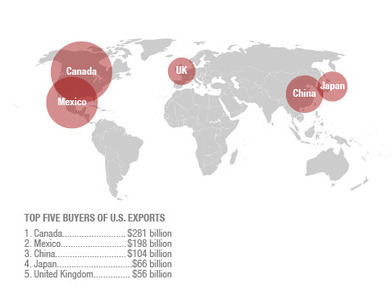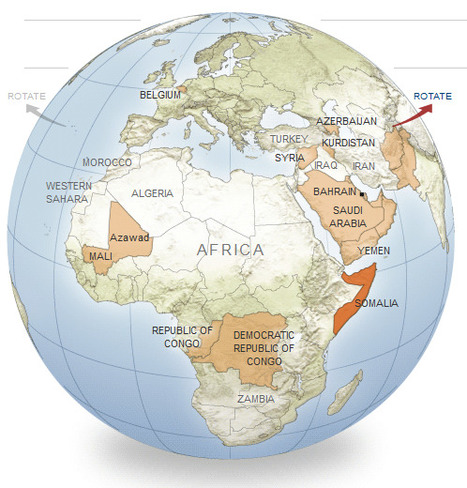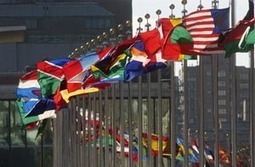"It's a myth that the U.S. doesn't make anything anymore." The U.S. economy still produces more through manufacturing tangible goods ($1.5 trillion) than it does in providing services ($600 billion) for the international market. The maps and graphs in this article are great teaching materials. The impact of NAFTA is shown powerfully in the regionalization of U.S. trade partners, making this salient material for a discussion on supranationalism as well.
Get Started for FREE
Sign up with Facebook Sign up with X
I don't have a Facebook or a X account
 Your new post is loading... Your new post is loading...
 Your new post is loading... Your new post is loading...

Anna Sasaki's curator insight,
March 24, 2015 8:53 AM
This article is probably one of my favorites I have read so far. It describes perfectly the political instability still present in the world, and that the globe and its boundaries are constantly changing, never staying put for too long. It surprised me at the new borders which most likely are going to happen, such as the unification of parts of Pakistan and Afghanistan. Also, the fact that South Korea is subtly getting ready for the reunification of North and South Korea. Also, there may be devolution in Mali and splintering devolution in the Congo's. This shows devolution as the power in these nations in which are breaking up, such as Belgium and the Flemish peoples. It shows the centrifugal forces behind the breakup of nations, such as ethnicities which vary, or the centripetal forces which bring nations together such as the combination of South and North Korea. 
Caroline Ivy's curator insight,
May 21, 2015 11:12 AM
Devolution/Fragmentation
This article is about nations that could become potentially independent in the near Future, whether due to chronic ethnic incoherence, redrawn governemnt policies, or a growing stateless nation group. Some examples given are an independent Khurdistan, a larger Azerbaijan, and the split of Belgium.
Centrifugal forces are the root of conflict in many countries. These forces include ethnic variety, lack of common language, political instability. These are what may be causing a split in both Belgium (developed country) and Somalia (developing country). There may also be a unification of countries—the map gives an example of the Saudia Arabia, Oman, Yemen, Bahrain, and other melding into one Arabian Gulf Union, of China absorbing Siberia. This does not necessarily herald the presence of centripetal forces, as these countries may be the result of military conquest.
|
|













This is great because now we can witness the creation of jobs in the country which can help the country get out of the depression that it is in. it also can help people get jobs and not have to worry about if there unemployment check is going enough to cover there expenses. Also people that are working are less likely to get depressed because they are not trapped in there homes because now they have something that is distracting them. But the United States is seeing a great improvement because of all the things being manufactured here. One good example is the Honda accord power plant and the ford motor company plant and even general motors in Detroit. all of these companies is helping the Americans get back into the workforce.
i was surprised to see that our country still exports so many products. What i find even more surprising is that the top countries that are buying our good are our bordering countries, Canada and Mexico. As much Petroleum we receive from the middle east we still are exporting so much of it to Canada and Mexico. It seems that foreign cars such as ones from Japan are taking over the industry yet our top export to Canada is car parts. it is good to see that America still exports.
I was surprised and reassured to see how much the U.S. exports to other parts of the world. I was unaware that the U.S exported to China because we physically surrounded by items made in China. Although our imports exceed exports, we are still producing,